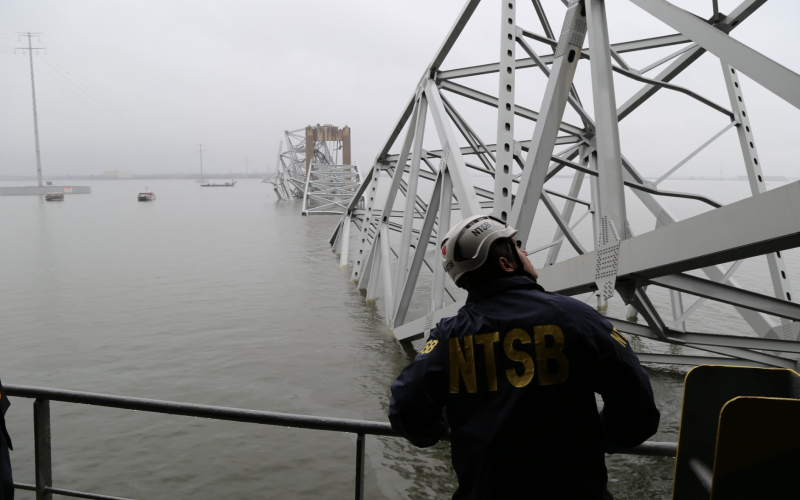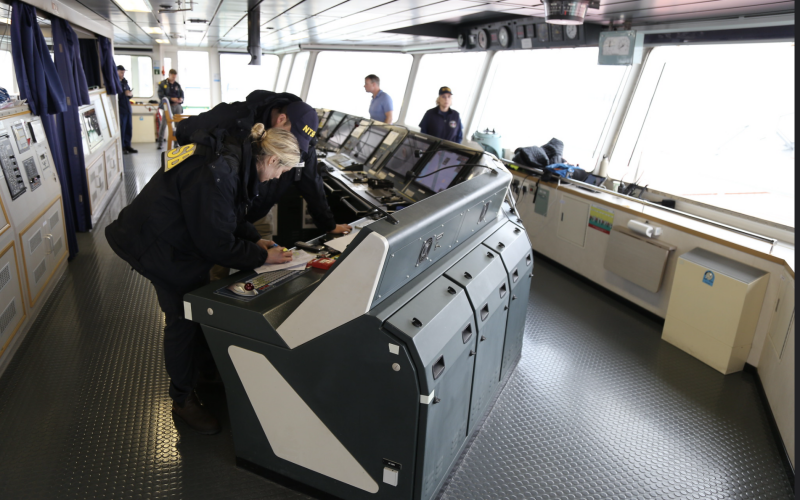The Chesapeake 1000 crane barge arrived from New York late Thursday to begin the immense task of clearing what’s left of the Francis Scott Key bridge from Baltimore’s ship channel.
“Our economy depends on the Port of Baltimore, and the Port of Baltimore depends on this channel,” said Maryland Gov. Wes Moore. “The largest crane on the East Coast will arrive tonight and help clear the debris."
The U.S. Department of Transportation late Thursday released $60 million in emergency funding to begin work on the channel, Secretary of Transportation Peter Buttigieg told MSNBC.
“There’s, I’m sure, going to be much more where that came from,” said Buttigieg. “Everything it takes, as the President said, to bring everyone in Baltimore back to normal.”
Owned by Donjon Marine, Hillside, N.J., the Chesapeake 1000 is a heavy-lift crane barge. Its colorful history goes back to the 1970s, when it was originally installed on the Hughes Glomar Explorer, and used in a secret CIA operation to raise a sunken Soviet submarine in the Pacific.

Later acquired and upgraded by Donjon, the crane works on waterfront construction around its New York City home port and elsewhere. It’s been employed in difficult salvage cases, like the 2016 recovery of the sunken tug Specialist after its fatal allision during the Tappan Zee bridge construction project on the Hudson River.
Lifting debris may also help dive teams complete the recovery of the four construction workers still missing since the container ship Dali slammed into one of the main bridge supports around 1:29 a.m. March 26, dropping the 1,200’ span into the Patapsco River.
“It is very difficult,” said Jennifer Homendy, chair of the National Transportation Safety Board, during a media briefing Wednesday. “It’s cold, it’s very cold water. There are currents.”
Dive operations and vehicle recovery had to be paused “due to hazardous conditions caused by the submerged wreckage and debris,” the Coast Guard’s unified command said in a Thursday statement.

According to the statement, crews continued to assess and monitor for spilled oils and hazardous substances inside a 2000-yard safety zone. Some 2,400’ feet of sorbent boom were deployed, along with 2,400’ of hard containment boom with anchoring systems around the Dali, and another 1,000’ of boom was on standby.
A sheen was around the vessel, and the Coast Guard and NTSB reported 56 shipping containers on the vessel contained hazardous materials. Altogether, that was estimated at 764 tons, including some corrosive and flammable materials, said Homendy.
Of those containers, 14 were damaged, and an industrial hygienist assessed their potential hazards, according to the Coast Guard.
“The chemical components assessed were soap products, perfume products, or not otherwise specified resin,” according to the joint command update. “We have been conducting air monitoring on the vessel and around the vessel with our contractor. No volatile organic compounds or flammable vapors were observed. We are continuing to air monitor throughout the incident.”






